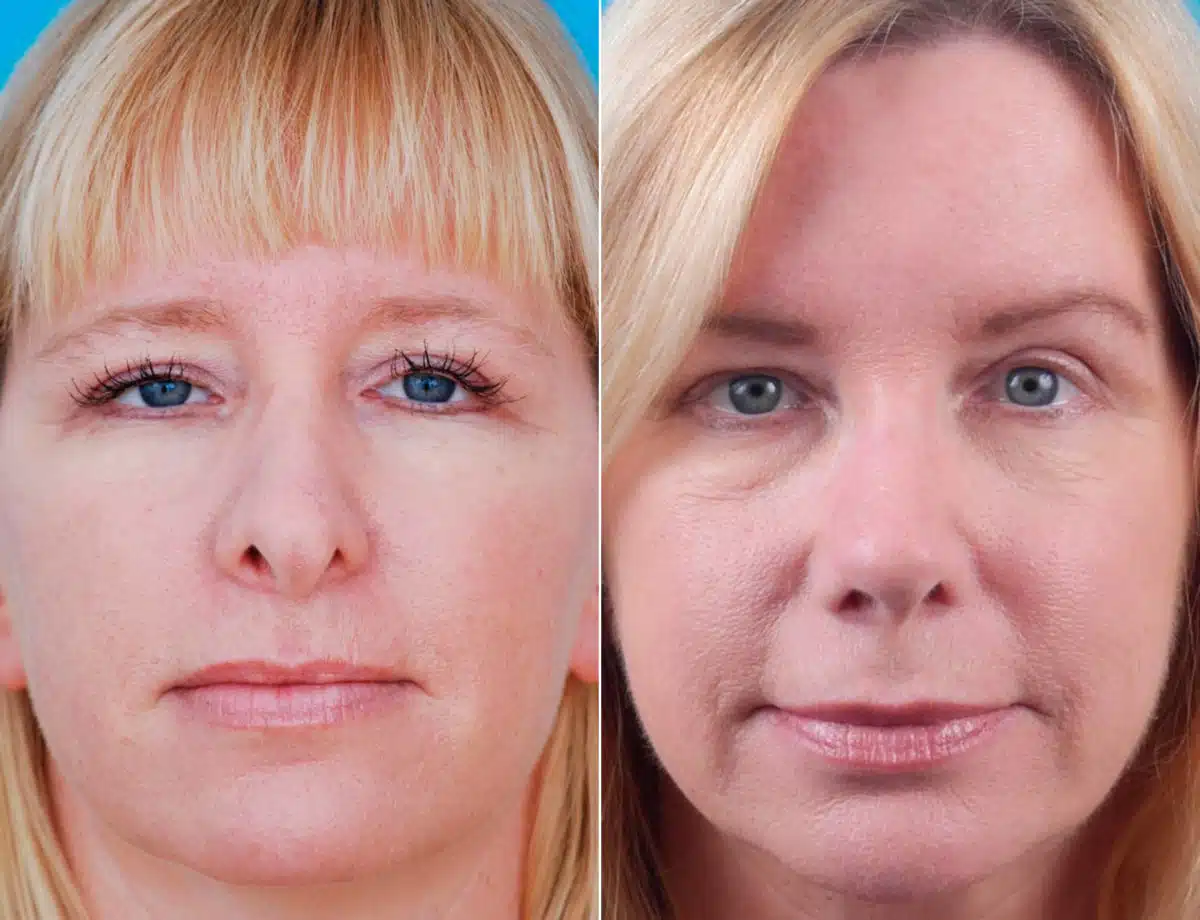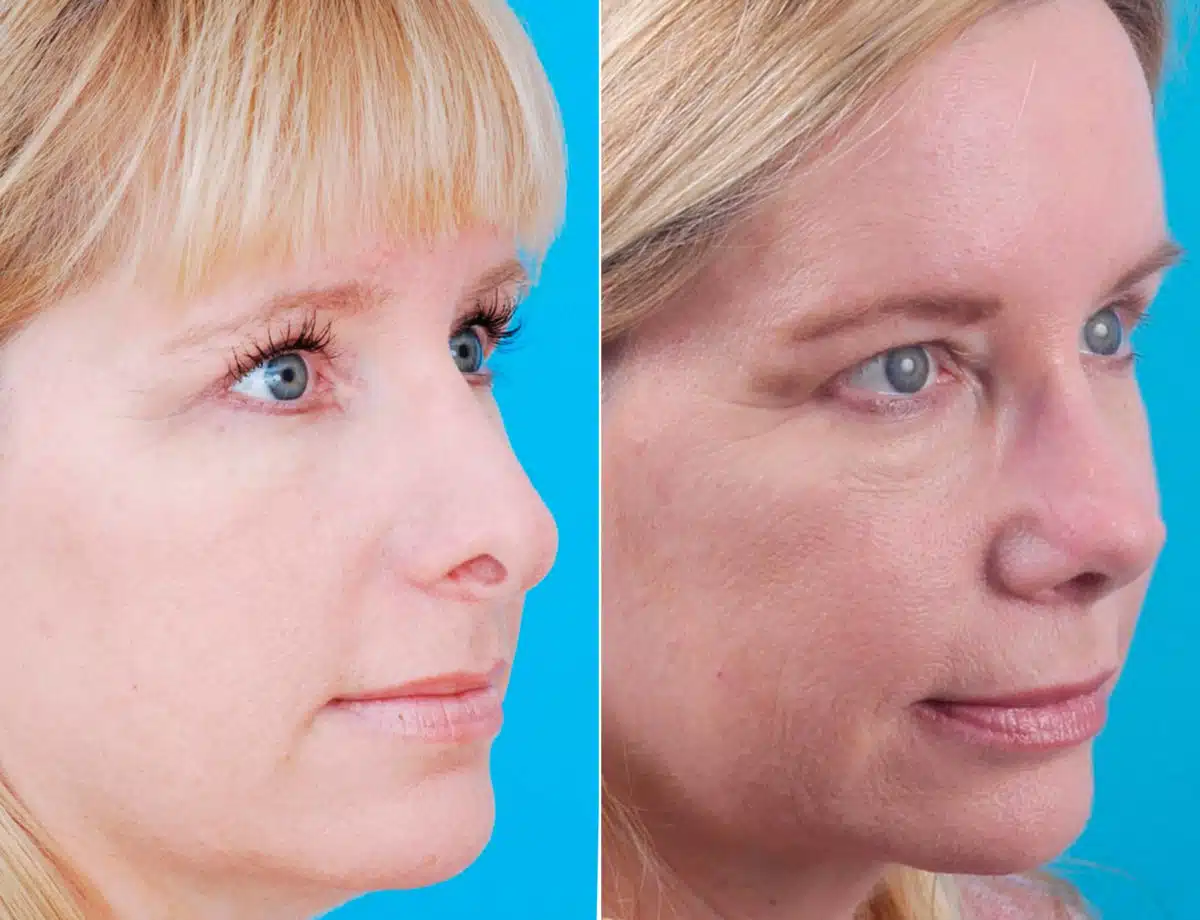How Long Does Revision Rhinoplasty Take To Heal?

Revision rhinoplasty, a secondary procedure, is a complex surgery performed by a board-certified plastic surgeon to rectify issues from previous rhinoplasty. This challenging facial surgery procedure involves conducting surgery on the intricate nasal structure and scar tissue.
Since the degree of scar tissue varies among patients, revision surgery is more complex than the initial surgery. This is one reason why it is always very important to choose an experienced revision rhinoplasty surgeon who is proficient in advanced techniques.
The full results, which include a balanced and natural-looking facial appearance, are typically visible after a year or two. This is due to the body’s healing time and the time for post-surgery swelling to subside.
Understanding Revision Rhinoplasty Surgery
This tough treatment seeks to cure issues that arose during the original nose surgery, such as breathing difficulties caused by congenital nasal abnormalities or scar tissue, as well as cosmetic concerns such as a bulbous appearance.
The complexity lies in the delicate nasal structure, including the nasal bridge, bones, and fragile passages, and the presence of scar tissue from the previous surgery.
Advanced techniques and extensive cartilage grafting may be required, especially when there’s insufficient cartilage or excessive scar tissue.
The Revision Rhinoplasty Healing Process
The healing process following a revision rhinoplasty surgery is a deliberate journey that demands patience and understanding from the patient.
The recovery period generally covers one to two weeks, during which individuals should plan for a period of absence from work lasting seven to ten days following their surgical procedure so it is advisable to book flights considering this.
Immediate Aftercare
The first several days after surgery are spent managing swelling, pressure, and discomfort. These are frequent problems that will gradually improve with time.
Swelling and bruising often occur post-procedure. However, the revision rhinoplasty swelling timeline typically only lasts a few days.
In addition, breathing through the nose may be difficult initially due to nasal swelling but should improve within two weeks.
It’s also important to keep your head elevated, especially during the first few days after surgery, to reduce swelling and improve blood flow.
Light exercise can be started within 48 hours; but, for around three weeks, avoid intense activity including heavy lifting and cardiovascular exercises.
Long-Term Recovery
The long-term recovery from a revision rhinoplasty involves a gradual reduction in swelling and a slow return to normal activities. During this time, the nose continues to heal, and the final shape and appearance gradually emerge.
Regular follow-up sessions with the revision rhinoplasty surgeon are required for optimal long-term outcomes. These meetings are critical checkpoints for assessing the healing process and making any required adjustments to guarantee the best possible outcome.
They give the surgeon a chance to answer any questions or worries the patient might have and provide direction on post-operative care to maximize outcomes.
Secure Your Safe Treatment Experience with Dr. Daniel G. Becker.
Join our satisfied clients who’ve experienced safe, effective treatments.
Tips for a Smooth Revision Rhinoplasty Recovery Time
The recovery process after revision rhinoplasty surgery can be eased with a few simple steps. Some of these are keeping your head up, eating well, and staying away from certain things and activities.
Keep Your Head Elevated
In the critical days following the revision rhinoplasty surgery, it’s paramount to adhere to certain postoperative guidelines to facilitate the healing process and ensure optimal results.
One of the most important things to do is to keep your head up, especially in the first few days of healing. This easy-to-do trick can greatly enhance blood flow to the whole nasal structure, which is very important for the mending process.
It also helps to reduce nasal edema, which is a major worry among people following surgery. To accomplish this, use many pillows to prop up your head while relaxing or sleeping. This position not only helps to manage swelling, but it also gives comfort and reduces the amount of pain experienced in the first few days after surgery.
Maintain a Healthy Diet
After revision rhinoplasty surgery, it is very important to keep a healthy diet for the healing process. A diet full of nutrients helps the body heal, which is especially important after major surgeries like revision rhinoplasty.
You might want to eat more veggies, fruits, lean proteins, and whole grains. These nutrients help reduce swelling and inflammation after rhinoplasty surgery. They also help tissues heal, boost the immune system, and give you energy to get better.
In addition to maintaining a healthy diet, it’s also important to stay hydrated. Drinking lots of water maintains the tissues hydrated and helps the body to eliminate toxins, so encouraging speedier healing. Avoiding alcohol is also wise since it might cause the body to dry up and impede healing process.
Adhering to these dietary guidelines can support your body’s healing process and potentially expedite your recovery time, helping you achieve a balanced and natural-looking facial appearance sooner.
Things Patients Should Avoid During the Revision Nose Job Healing Time
There are a few things that patients should avoid during their recovery from a revision nose operation to guarantee a smooth healing process.
1. Strenuous activity, including heavy lifting and cardiovascular activities, should be avoided for at least three weeks. These activities can increase blood pressure, potentially leading to bleeding or increased swelling.
2. Because prolonged sun exposure can worsen swelling and even cause skin discoloration, it’s best to avoid it if possible. Sunscreen and a hat are must-haves for venturing outdoors.
3. Certain medications, such as Advil and Motrin, may also increase the risk of bleeding and should be avoided for two weeks following surgery. Instead, patients may be prescribed specific pain medications to manage postoperative pain.
4. Avoiding chewy foods that can put unnecessary pressure on the nose and replacing them with soft, cool, and room-temperature foods can also aid in the recovery process. It’s also advisable to avoid alcohol and smoking, as they can hinder the healing process by constricting blood vessels and delaying the body’s healing response.
When to Seek a Consultation With a Revision Rhinoplasty Surgeon
When contemplating surgery, it’s important to schedule a consultation with a highly experienced revision rhinoplasty expert like Dr. Becker, who is a board-certified plastic surgeon.
During the consultation, Dr. Becker will thoroughly assess the current condition of your nose, taking into account any scar tissue that may have developed from prior rhinoplasty or facial surgeries. He will also discuss your objectives for the revision surgery and offer personalized recommendations for the most suitable course of action.
To ensure patients are thoroughly informed and equipped with essential knowledge before embarking on this intricate procedure, The Becker Rhinoplasty Center also provides a wealth of educational resources, including rhinoplasty education. These resources encompass informative books and engaging educational videos, empowering individuals to make well-informed decisions about their rhinoplasty journey.

